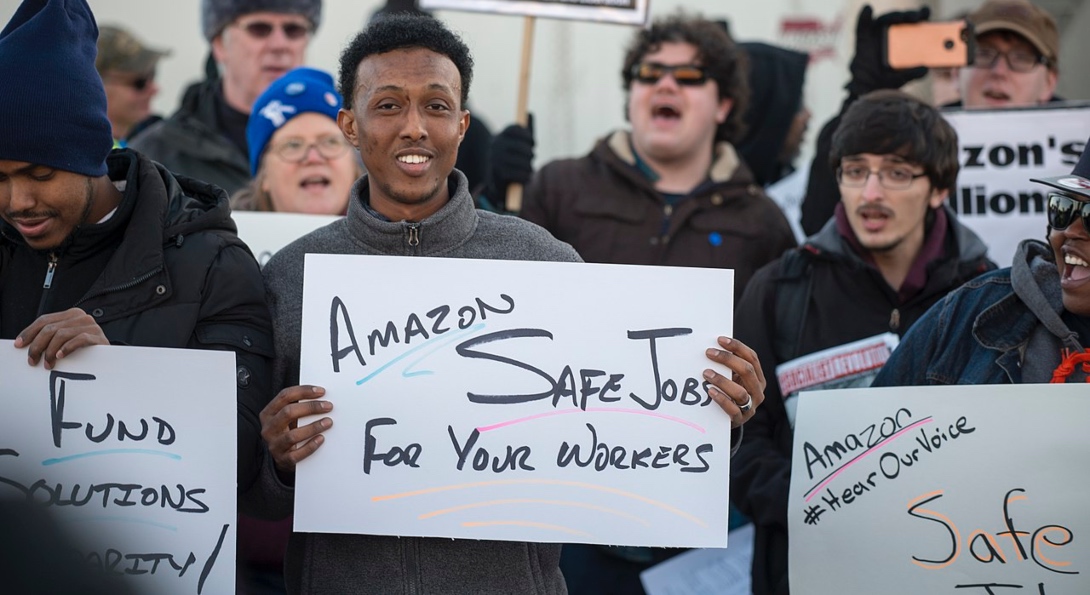Paid Sick Leave in Public Health Crises

Amicus Brief: Derrick Palmer, et al., vs. Amazon.com Inc., et al.
Amazon’s Staten Island center, known as JFK8, operates 24 hours a day, seven day a week and employs thousands of workers. The workers in the lawsuit, including a warehouse associate, a problem solver, a processes assistant and a robotics team member — along with some of their family members — claimed that JFK8 failed to comply with guidance from the U.S. Centers for Disease Control and Prevention, and argued that Amazon’s productivity requirements prevent employees from engaging in basic hygiene, sanitation and social distancing. Their complaint charged Amazon with public nuisance, breach of duty to provide a safe workplace and failure to timely pay COVID-19 leave, and that the company failed to comply with state and federal public health guidance during the COVID-19 pandemic.
A nationwide group of occupational health physicians and public health experts, including SPH’s Linda Forst, MD, senior associate dean, submitted an amicus curiae brief to the United States Court of Appeals for the Second Circuit in support of the plaintiffs’ claims. This section of the brief examines the key role of paid sick leave in a public health crisis.
Amicus brief links
Paid sick leave is crucial for preventing outbreaks and protecting workers
Employers can also prevent COVID-19 transmission by allowing and encouraging their employees to take paid sick leave. “Paid sick leave allows employees to leave work to seek care or recuperate at home without losing wages.”23 Workers who have access to and use their paid sick leave benefits experience a reduction in all-cause mortality and are less likely to contract and spread COVID-19.24 The public health benefits of paid leave also extend to workers’ families. Not only does paid leave make children and elderly parents less likely to contract COVID-19, but workers can take time to care for these vulnerable populations if they do become sick.25
Even so, warehousing workers with access to paid leave may feel discouraged from using those benefits when necessary.26 This phenomenon—known as presenteeism—can be caused by myriad factors, including the lack of clear guidance from one’s employer, the possibility of disciplinary action, and a “presenteeism culture” in the workplace, i.e. pressure from one’s colleagues or employer to show up for work when sick.27 As one recent article put it, presenteeism “can be endemic in workplace cultures that stigmatize sick leave and ‘normalize’ long working hours. Presenteeism is also more likely in jobs with high workload pressure, which has increased in many organizations during the pandemic.”28 The record of this case suggests Amazon’s JFK8 facility exhibits many of these features.29
Presenteeism is a major problem. The economic cost of presenteeism to American society may be in the range of hundreds of billions of dollars per year.30 Focusing more narrowly on health, presenteeism causes workers to get sick and aids the spread of pandemics. According to one analysis, approximately 8 million employees attended work while infected with H1N1 during the 2009 pandemic, causing the infection of as many as 7 million co-workers.31 While employers may want to focus on reducing absenteeism, “there is growing evidence that sickness presenteeism . . . is far more costly.”32
Experts are uniform in their conviction that employers must take extra care to reduce presenteeism—and encourage use of paid sick leave—during the COVID-19 pandemic.33 This is particularly true for industries where social distancing and working from home may be difficult.34 Indeed, in a guidance issued specifically to warehousing employers, the CDC endorsed the implementation of “flexible sick leave and supportive police and practices,” including that employers must “encourage sick employees to stay at home without fear of reprisals, and ensure employees are aware of these policies.”35 Employers that do not take these steps bear the heightened and avoidable risk of COVID-19 outbreaks at their facilities.